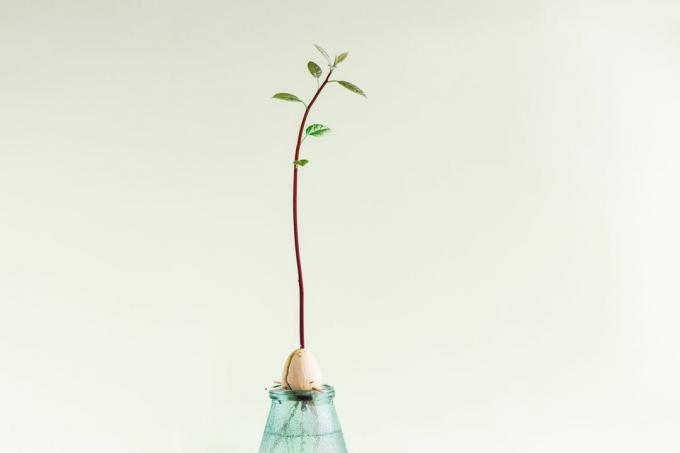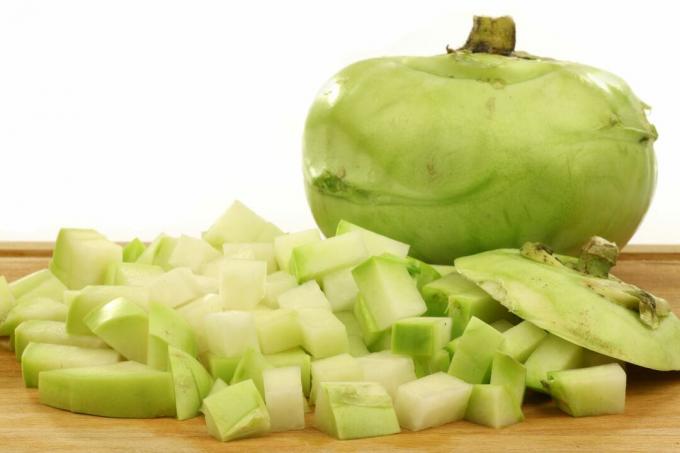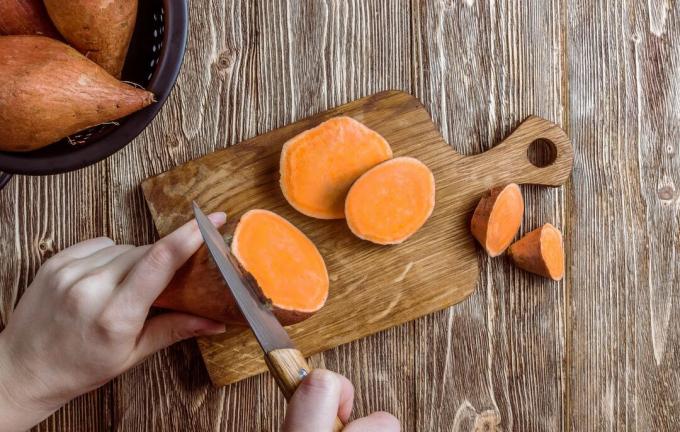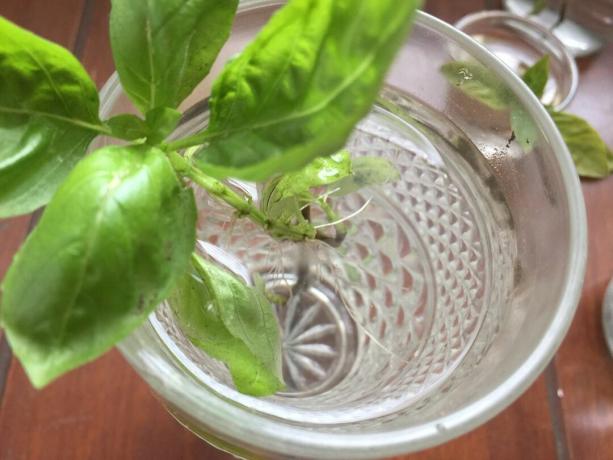Plant leftover vegetables & let them grow back: Celery, spring onions, lettuce, carrots & many other species can easily be rooted and upcycled.
It's hard to believe, but a lot of vegetables from the supermarket grow almost indefinitely with simple means. Because the lower end or the stalk of spring onions, celery, Beetroot and Co. can easily be rooted in water and then planted in a container of your choice. In this way, you can breathe new life into actual “kitchen waste” that would otherwise end up on the compost.
In recent years, awareness of waste and recycling has grown steadily. With this in mind, there are more and more people who reuse and regrow their vegetable scraps. In itself it is very easy to breathe new life into the vegetable cuttings and to plant them in your own garden or on your own balcony and let them grow. This is not only good for the environment, but also for your own wallet. This means you always have fresh vegetables from your own cultivation to hand. Incidentally, this also works if you don't have a garden or balcony: vegetable remnants can also grow back on the windowsill!
Which vegetables are particularly suitable for regrowth can be found below in the detailed cultivation instructions. But also Herbs and even types of fruit can be used in this way: be it the head of the pineapple or kernels of Mangoes and Avocados.

Cultivation instructions for regrowth of vegetable residues:
- Growing celery: The stalk should be at least 5cm long and is placed in a glass with warm water for 5 to 7 days. The water should be changed at least once during this time. Then you transplant the celery in earth. There it will form roots within the next few weeks and will grow steadily. If you have a little more space in the garden, you can cover your own needs with around 10 recycled celery plants.

2. Planting romaine lettuce: The stalk, which is at least 5 cm long, is left to steep in a glass for 5 to 10 days. During this time, the plant forms the so-called cambium on the cut surface and sets the first roots. After this time, put the salad in vegetable soil and keep it slightly moist.

3. Growing the onion: The section of onion should have an area of at least 4 cm x 4 cm and be 2 cm high. In contrast to the other vegetable cuts, you can put the onion directly into the soil.

4. Planting spring onions: For successful regrowth, the spring onions Maintain at least 5cm in length. The fresher the roots at the end of the bulbs, the higher the chances of success for healthy, regrown plants. The sections are placed in a glass with lukewarm water for 5 to 7 days and the water is changed at least once. The spring onions can then be planted in the substrate.

5. Growing the leek: The same procedure applies here as for spring onions.

6. Planting kohlrabi: The section of the Kohlrabi should have at least 4 cm x 4 cm as a base and be about 2 to 3 cm high. Kohlrabi can also be planted directly in the ground and does not require a water bath.

7. Growing potatoes back: Who doesn’t know that: You’ve bought too many potatoes and you’re not able to use them fast enough. If the potatoes are stored lightly and also warm, the tubers will quickly sprout and become wrinkled. No need to dispose of the tubers. These can also be planted out without any problems, where new tubers will then form.

8. Planting carrots: The section of Carrots must be at least 3 to 5 cm long. In the water, the carrot forms new green after a few days. Then it is ready to be planted in soil. Roots will follow after about 2 to 3 weeks. The regrown greenery is especially useful for owners of rodents. The little animals really like it.

9. To regrow sweet potatoes: From trendy vegetables sweet potato A small section is enough to successfully regrow it. In water, the piece of sweet potato takes root and forms shoots after about 15 days.

10. Infuse the basil: Even basil can be propagated quite easily using cuttings. The lower, larger leaves are removed from the 5 cm long shoots and the upper, small leaves are left on the shoot. After 15 to 20 days, basil will form roots and can be planted in a pot of soil.

11. Growing Chinese cabbage: Even Chinese cabbage can be reused. However, only leaves and not a compact head form from the shoots. The leaves are still very tasty and can be used as wok vegetables. For Chinese cabbage to root, the section should be at least 4 cm x 4 cm and 2 to 3 cm high. The lower part of the section should always be in contact with water. The first shoots appear after 15 days.

12. Growing beetroot: who Beetroot loves, will be thrilled that it is so easy to breathe new life into the tuber. However, only in rare cases does a completely intact tuber develop from the planted section. Fresh leaves can, however, be used as a side salad.

Some general tips for successful regrowth of vegetable residues at the end:
- Each vegetable section should be large enough so that the plant has enough energy to form roots and shoots.
- If you root the vegetable cuttings in water, the water should be changed every few days, otherwise there is a risk of rot.
- If you put the recycled vegetables in soil, it must always be kept slightly moist. The plants still lack roots, which is why they wither quickly in drought.
- Special heating mats, which make it much easier for the plants to develop roots, are very helpful.
- Small nurseries can also be used for optimal humidity. These often fit on the windowsill.
- The purchase of special potting soil is also useful, as this also has a positive effect on root formation.
Indoor plants can also be propagated quite easily at home. How one Pull houseplants from cuttings can and which plants are best suited for it, we have summarized for you in an article.
